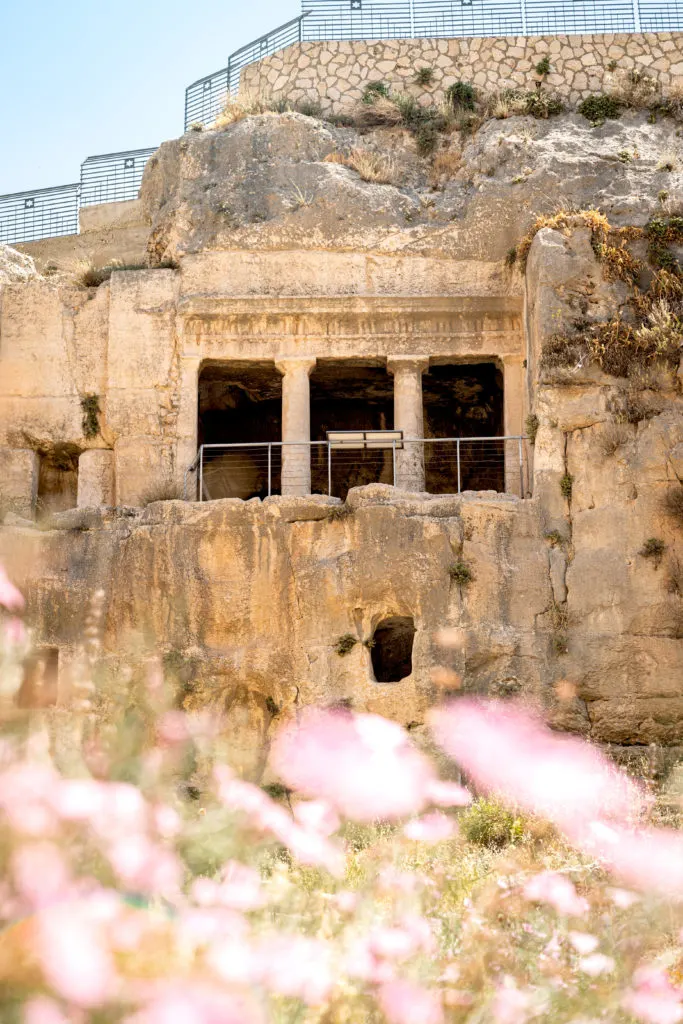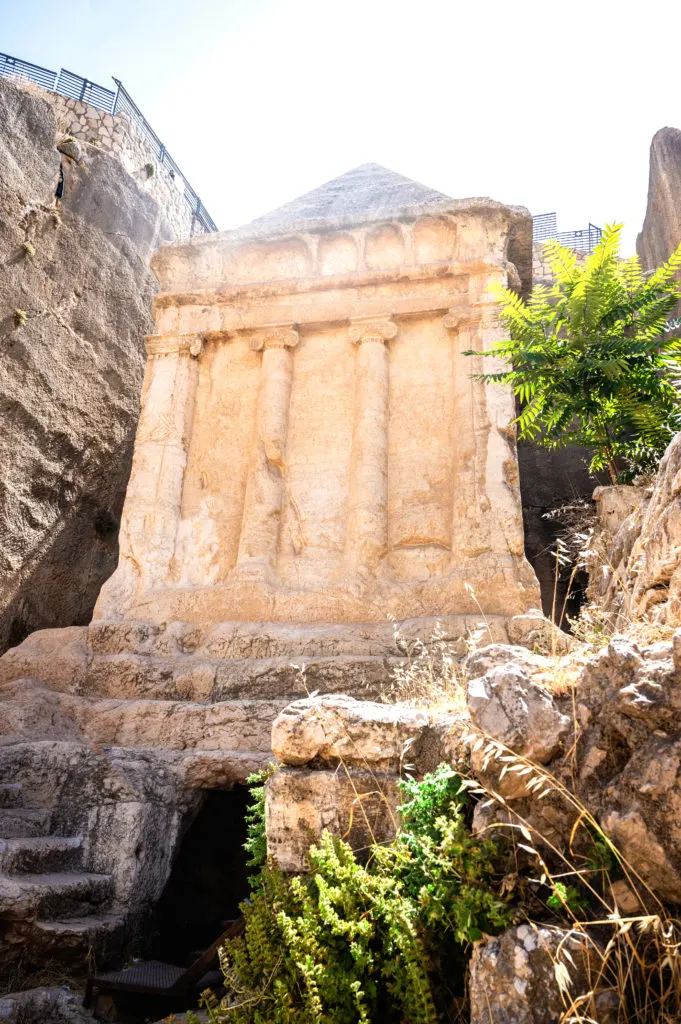The Tomb of Benei Hezir dates to the Hasmonean period and is hewn entirely inside the cliff. It is the oldest of four monumental rock-cut tombs in the Kidron Valley in Jerusalem.

A Hebrew inscription above the cave indicates that a family of priests from Benei Hezir is buried in the cave.
“This is the grave and the Nefesh of Eliezer Hania Yoazar and Yehuda Shimon Yochanan sons of Yosef son of Oved Yosef and Elazar sons of Hania, Kohanim of the Hezir family.”
The tomb’s inscription shows that the cave was used by several generations of the Benei Hezir family.
In the Hebrew Bible, there are two mentions of men with the name of Hezir.
One was the founder of the 17th priestly division (1 Chron. 24:15). The other one was among the leaders who set their seal to the covenant with Nehemiah (Neh. 10:20).
It is not certain if there is a relation between the family buried in the Tomb of Benei Hezir and the biblical Hezirs.
The inscription mentions a nefesh, which means “soul” in Hebrew, but is also a burial monument, which is what it means here.
It has been proposed that the Tomb of Zechariah is actually this nefesh.

Another option is that the additional façade to the north of the Doric dystilos-in-antis was the original nefesh.
Having a nefesh in front of a tomb was popular in the Second Temple Period among the rich.
The architectural style of the hewn elements, particularly the capitals of the columns, is inspired by Greek architecture.
Unlike the other tombstones nearby, the Tomb of the Sons of Hezir is made entirely in a uniform Greek style, without mixing different styles or Roman influences.